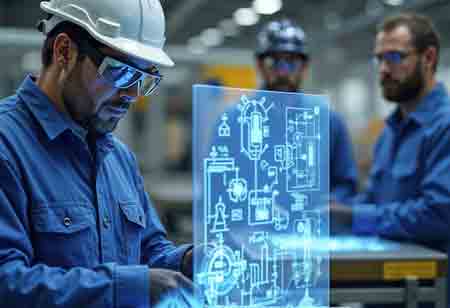Automakers have primarily focused on the mechanical aspects of cars, outsourcing electronic hardware and software to other suppliers as digital technology has been integrated into the vehicle.
FREMONT, CA: The automotive industry is transforming as it increasingly shifts towards electric vehicles (EVs) and driverless technology. This evolution relies heavily on advancements in hardware, software, and systems. Key factors driving this change include automakers developing their proprietary software and original equipment manufacturers (OEMs) evolving into general technology brands. These trends are reshaping the industry and contributing to a more diverse market.
Data that is publicly available and open-source
Technology companies have developed open-source vehicle operating systems, like Automotive Grade Linux, for cars, enabling collaboration between developers and automakers. These systems, designed with electric and driverless cars in mind, aim to make EV production easier and more appealing.
OTA while traveling
Over-the-air (OTA) programming distributes new software, configuration settings, and encryption keys to devices. It allows a central location to send an update to all users, who cannot refuse, defeat, or alter it. Modern vehicles contain many more software components than initially thought, with over a hundred electronic control units (ECU) in average cars. OTA car updates eliminate the need for software-related recalls and make software updates easy and seamless.
Automakers hope to cash in by charging for downloadable upgrades and extras after the car's initial purchase through OTA, allowing devices to download updates and patches in real time.
The adoption rate of autonomous vehicles is still modest.
Despite significant advancements in self-driving cars, developers face challenges adapting technology to new environments. Despite safety concerns, manufacturers are testing robotic delivery vehicles and taxicabs. The benefits of improved safety could be worth the wait, with one optimistic prediction suggesting "robotaxis" could replace conventional cabs fourfold by 2030.
Internet of Things
IoT improves road safety, congestion, pollution, and energy expenditure by enabling secure communication between vehicles and infrastructure. Startups and emerging companies are developing advanced sensing technologies to gather vehicle data and understand their surroundings. This technology could also enable automated fuel and toll payments.

 Copyright © 2025 AutoTech Outlook. All Rights Reserved | Privacy Policy | Subscribe | Sitemap | About us | Feedback Policy | Editorial Policy
Copyright © 2025 AutoTech Outlook. All Rights Reserved | Privacy Policy | Subscribe | Sitemap | About us | Feedback Policy | Editorial Policy